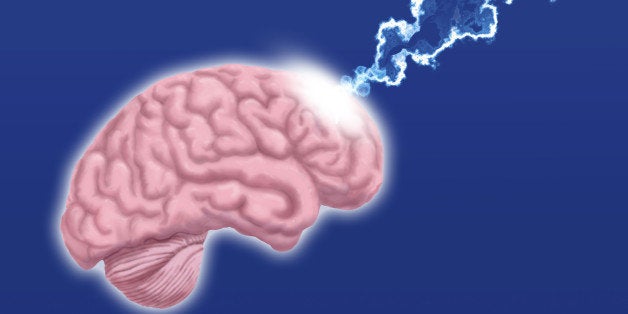
Difficulty focusing, for many of us, is a daily reality of modern life. How many times do you open your email and get sidetracked from a more important task at work, or find yourself starting to zone out while a friend is telling you a story about his day? Probably pretty often.
Scientists are starting to learn more about how the brain allocates its attentional resources -- and how our attention gets away from us. New research from neuroscientists at McGill University has identified, for the first time, a network of neurons critical to our ability to control attention.
A complex of neurons in the lateral prefrontal cortex of the brain, an area involved in many aspects of executive behavioral control, including selective attention, strategic behavioral planning, short-term information retention and action selection. These neurons interact with one another to filter visual information while also ignoring distractions.
While previous research has identified individual neurons that carry attentional signals, there was not yet a sense of a larger neural "attentional map," lead researcher Dr. Julio Martinez-Trujillo explained to The Huffington Post.
"What was unclear [previously] is whether the are contains a map of activity that can signal where attention is allocated, within the short time we use to orient attention (few hundred millisecond)," Martinez-Trujillo said in an email to the Huffington Post. "The contribution of this study is that we obtained a realistic estimate of the attentional map, which is composed of, not only one neuron but of many neurons that interact with one another."
The researchers recorded the brain activity of macaque monkeys as they shifted their gaze to look at objects displayed on a computer screen, which also ignoring visual distractions. Then, the recorded brain signals were input on a computer decoder which mimicked the computations of the brain as it focused.
To the researchers' surprise, the computer decoder was able to consistently and accurately predict where the monkeys were covertly focusing their attention before they even looked that way -- and, even before the onset of a distraction, they were able to predict whether the monkey would be distracted by a visual stimulus.
What's more, the researchers were able to create focused and distracted states by manipulating neural interactions.
One hypothesis derived from these findings is that there must be a particular amount of interaction between neurons in the prefrontal cortex in order for attention to be properly directed. In children with ADHD, for instance, these interactions may be excessive, causing disruptions in their ability to focus attention.
"It is essential for us is to corroborate this hypothesis in the near future," said Martinez-Trujillo. "One can imagine that drugs or other interventions that could manipulate interactions between neurons within the prefrontal map could be used to treat disorders of attention (focusing too little or too much)."
The findings may have important implications for those suffering from autism, ADHD and schizophrenia, which all involve disruptions in one's ability to focus.
"This suggests that we are tapping into the mechanisms responsible for the quality of the attentional focus, and might shed light into the reasons why this process fails in certain neurological diseases such as ADHD, autism and schizophrenia," Sébastien Tremblay, a doctoral student at McGill and one of the study's authors, said in a statement. "Being able to extract and read the neuronal code from higher-level areas of the brain could also lead to important breakthroughs in the emerging field of neural prosthetics, where people who are paralysed use their thoughts to control objects in their environment."
The findings were recently published in the journal Neuron.

